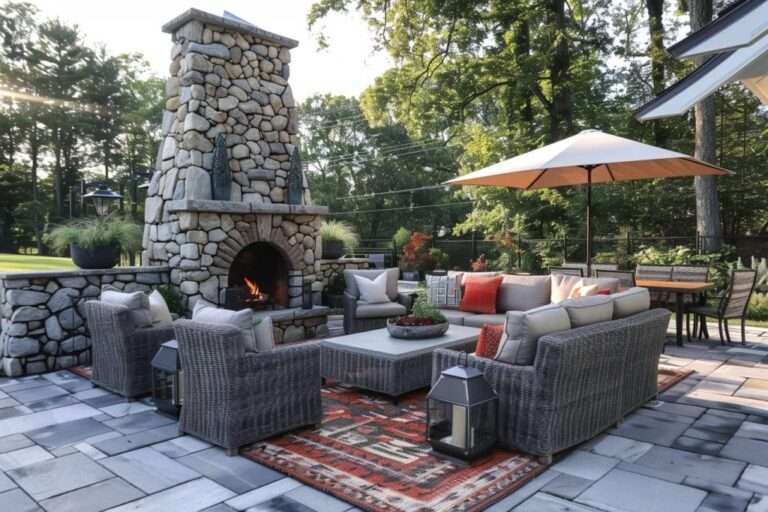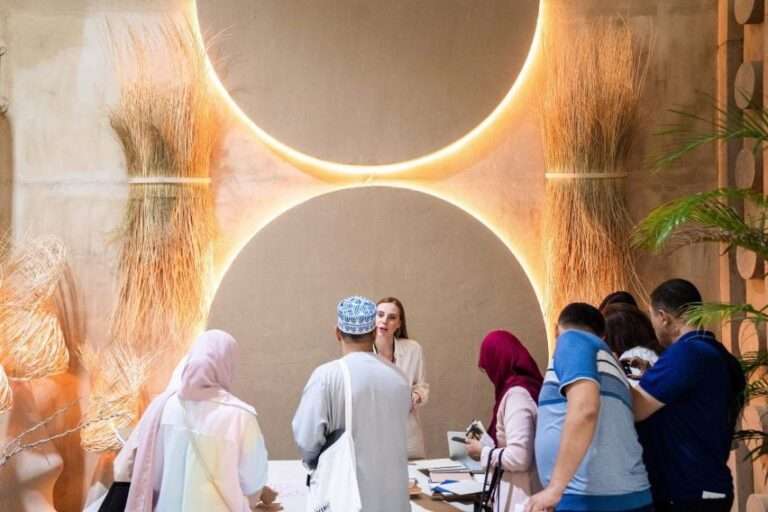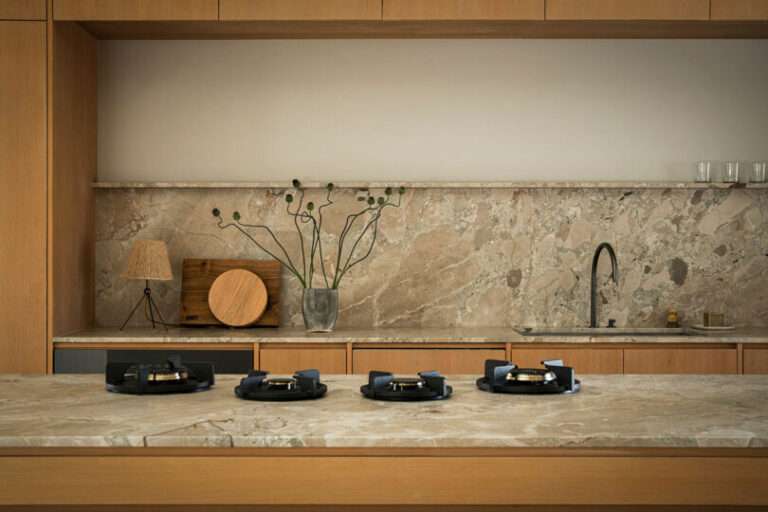Among a design week that now boasts 13 separate design districts (count ’em!), Brompton Design District is the OG – London Design Festival’s first and oldest design district established in 2007 to “foster a space where new design can flourish.” 16 years on, Jane Withers’ curation explores the theme of “Conviviality – The Art of Living Together” and how design can not only flourish but forge positive relationships between people, the spaces they inhabit, and the wider world. And it delivers on that brief in spades.
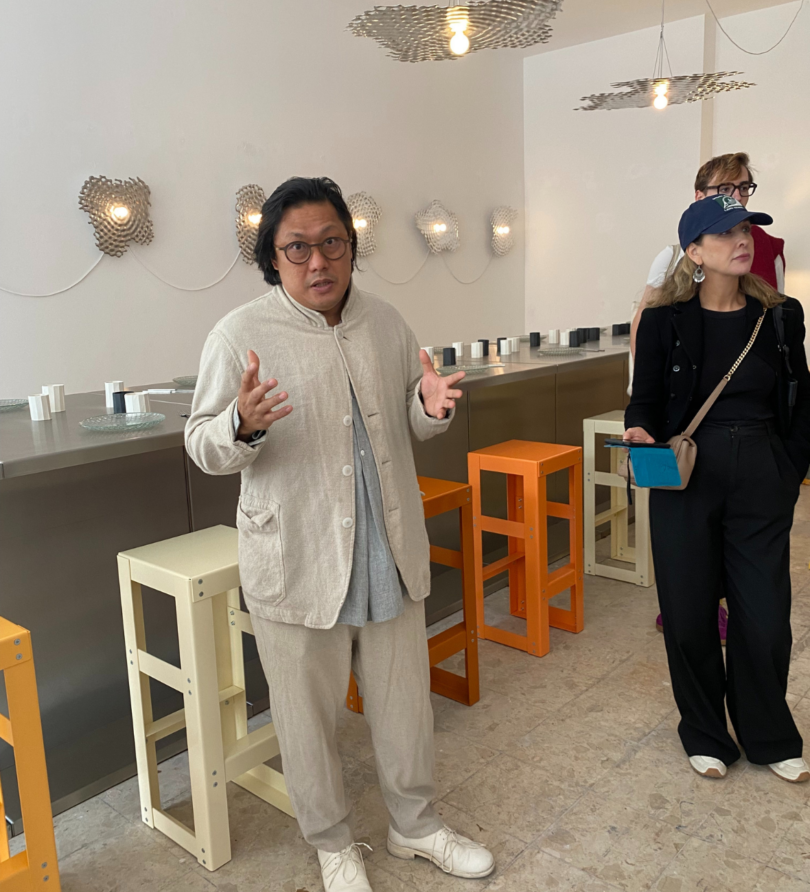
Guan Lee introduces The Farm Shop. Photo: by Katie Treggiden
‘Fels presents The Farm Shop’ (top and above) is a curatorial project that brings together 22 artists, designers, and architects to create a playful experience drawing from Grymsdyke Farm – a research facility, experimental fabrication workshop, and live-work space located in rural Buckinghamshire, in the UK. Curated by Marco Campardo, Guan Lee (above), and Luca Lo Pinto, the project includes site-specific dining homeware created over the summer of 2023 and brought together into an immersive space that uses food to explore the concept of “conviviality.”
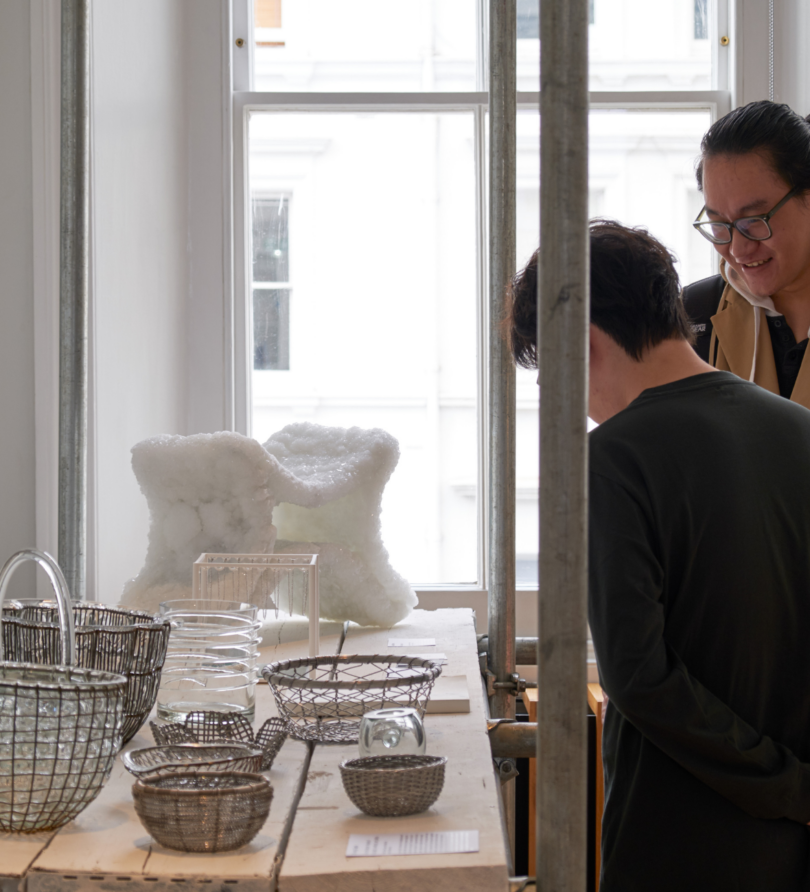
Second Nature: Vessels of Habitation, Livelihood, and Politics by Shivangi Gupta Photo: Studio Stagg
Cromwell Place, with its 14 gallery spaces across five Grade II listed townhouses – and brand new cafe – plays host to the “hub” of the district and a number of key exhibitions. Gallery 6 provides a home away from home for graduates from the MA Design Products course at the Royal College of Art. Shivangi Gupta’s “Second Nature: Vessels of Habitation, Livelihood, and Politics” (above) examines the relationships between craft and technology, maker and designer, and material and hand, with the aim of uncovering new methods of collaboration and practice.
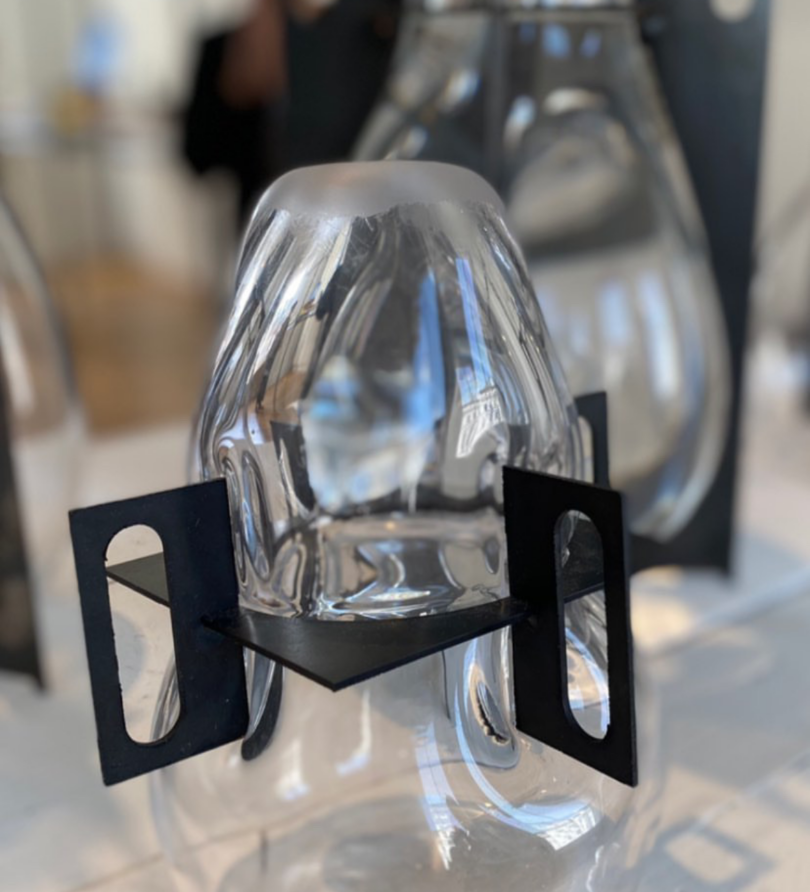
Contained 2.0 by Kamea Devons Photo: Katie Treggiden.
Meanwhile “Contained 2.0” by Kamea Devons features Coca-Cola glass bottles re-blown into shapes inspired by the historical glass-blowing artist Ennion, as an exploration of the intertwined nature of globalization, design, technology, the economy, and society at large.

Back of House by MA Design Products course at the Royal College of Art Photo: Studio Stagg
The partner exhibition to the gallery showcase within Cromwell Place was in a garage on nearby Cromwell Mews and extended the theme of “back of house” by demonstrating making processes and works in progress.
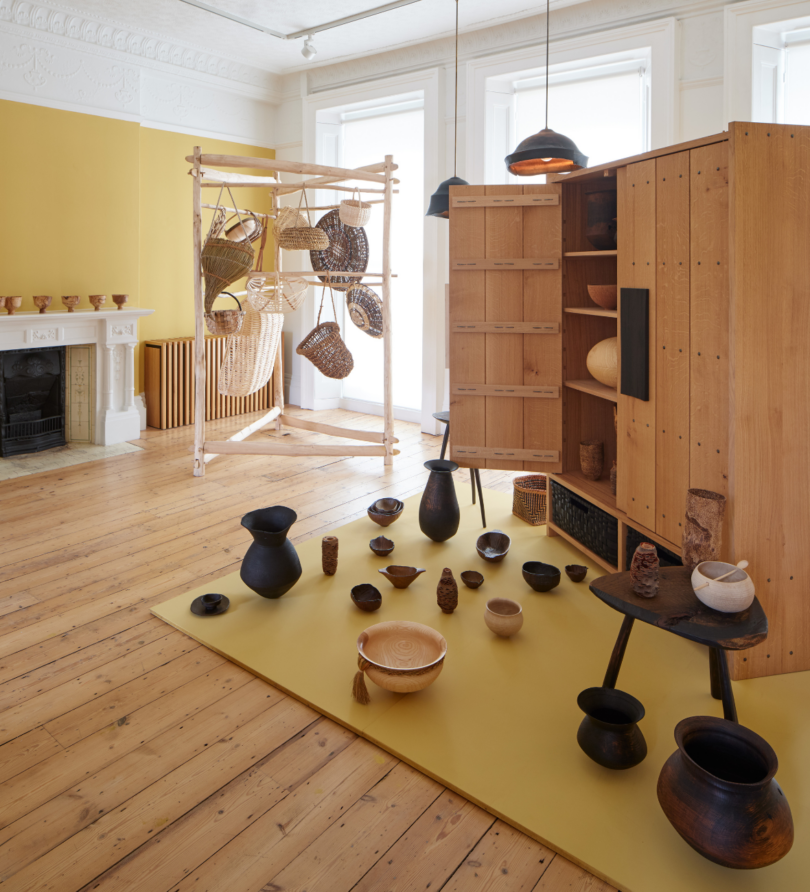
Objects by Ash & Plumb, Darren Appiagyei, Takahashi McGil, Alex Walshaw, and Studio AMOS Photo: Studio Stagg
Back at Cromwell House, The New Craftsmen returns to its pop-up roots under the stewardship of internationally renowned gallery owner Sarah Myerscough and former product director Kathy Lacour, with a showcase of British craft entitled “Join, Assemble, Hold” across two rooms conceived as a kitchen and a drawing room. The Kitchen (above) features “crafted pieces that are connected or joined and conjure a sense of conviviality and togetherness.” The Nailed Pantry “overflows” with turned wood vessels and hand-wrought natural objects from Ash & Plumb, Darren Appiagyei, Takahashi McGil, Alex Walshaw, and Studio AMOS. The suspended installation of regional baskets behind it highlights rare and endangered basketry techniques, some of which rely on British woods that are at risk of extinction. The hand-turned bowls on the mantlepiece are by one-half of Forest & Found, Max Bainbridge.
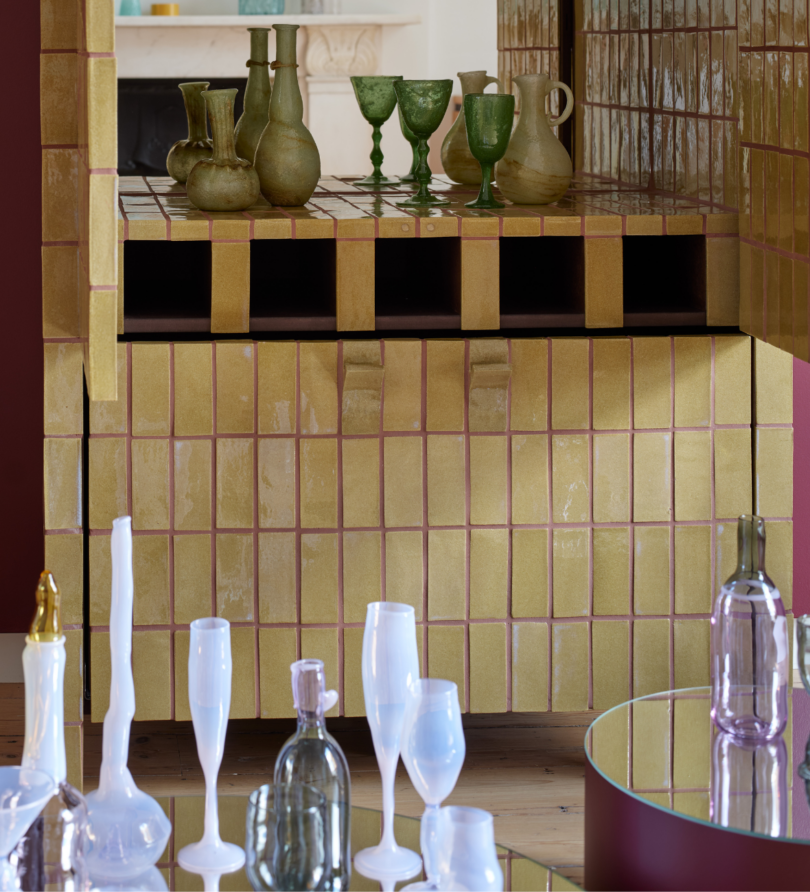
Welcome Drinks Cabinet by ceramicist Matthew Raw. Glass objects by Jochen Holz. Photo: Studio Stagg
The centerpiece in the “drawing room” is the tiled Welcome Drinks Cabinet by ceramicist Matthew Raw, complemented by iridescent glass objects by Jochen Holz. “His innovative and unique pieces draw us into his world of the playful and sublime,” says The New Craftsmen.
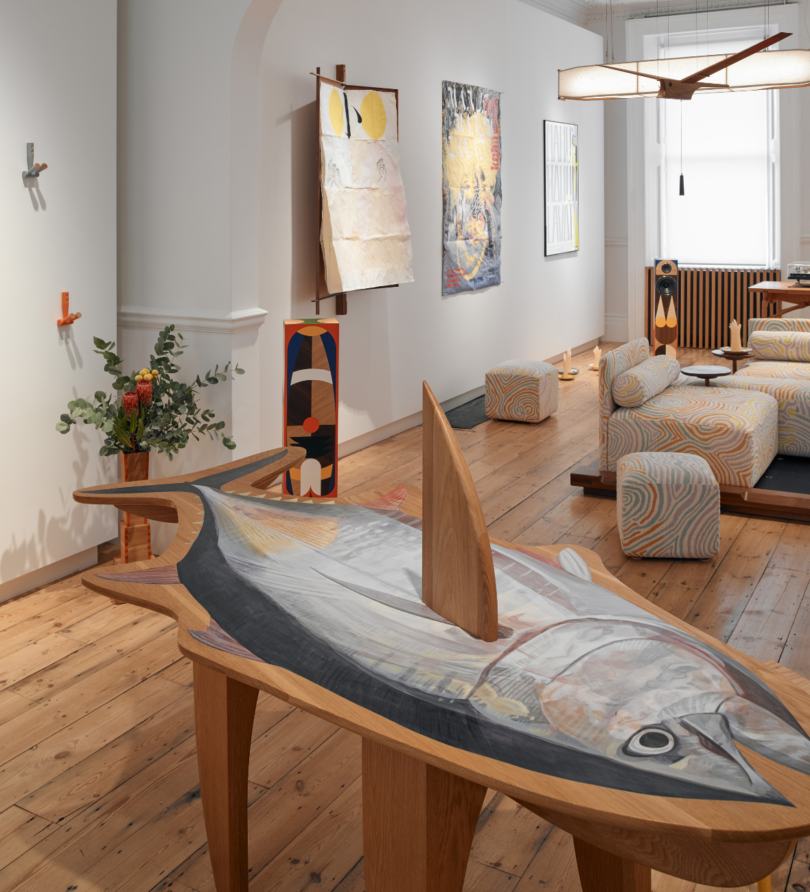
Fish Table: Fatty Tuna by Rio Kobayashi and James Hague, 2019 Photo: James Harris
What do you do when you get invited to do your first solo show and the theme is “conviviality?” Rio Kobayashi understood the assignment, invited all his pals to take part, and turned it into a collaborative effort. Calling the show “One Hand Washes The Other,” he collaborated on every piece and brought them together into a space that “co-exists” as a living room for people to enjoy the company of design objects and designers, much like they might do in his own living room at home. His motto of “bringing people together and having fun” epitomizes conviviality and demonstrates his belief that “happiness is achievable by creating a life of quality both in the materialistic world and in our inner world.”
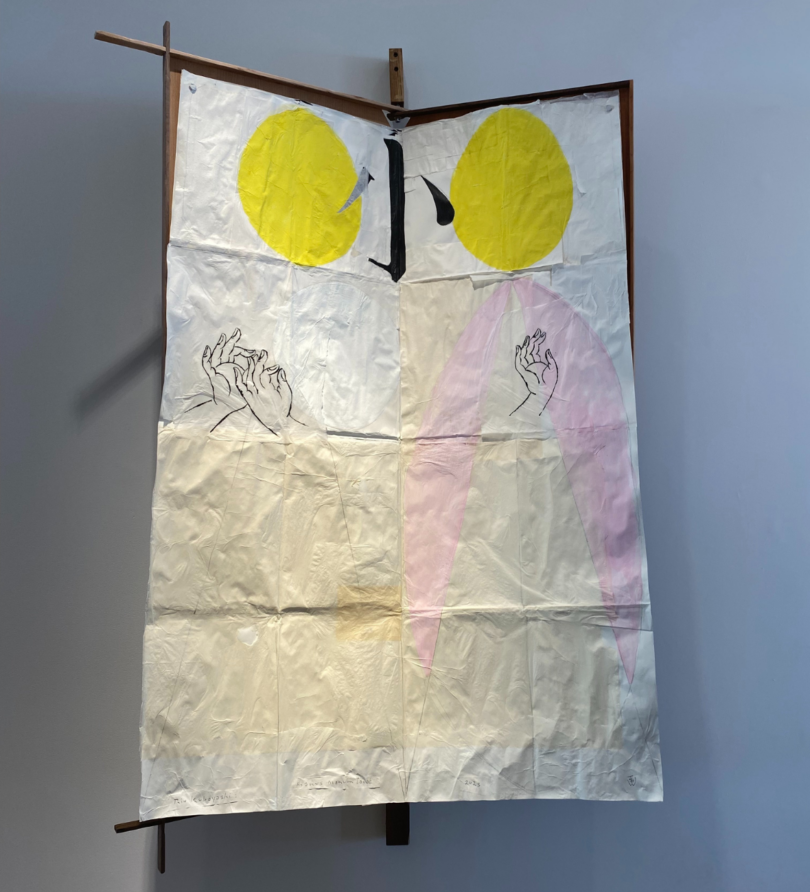
Exhibition poster by Tilmann S. Wendelstein, 2023 Photo: Katie Treggiden
Kobayashi was born in Japan, trained in Austria, has lived all over Europe, and is now based in East London. His work reflects his journey, the relationships he has forged along the way, and his life story so far. Here’s to the next chapter!
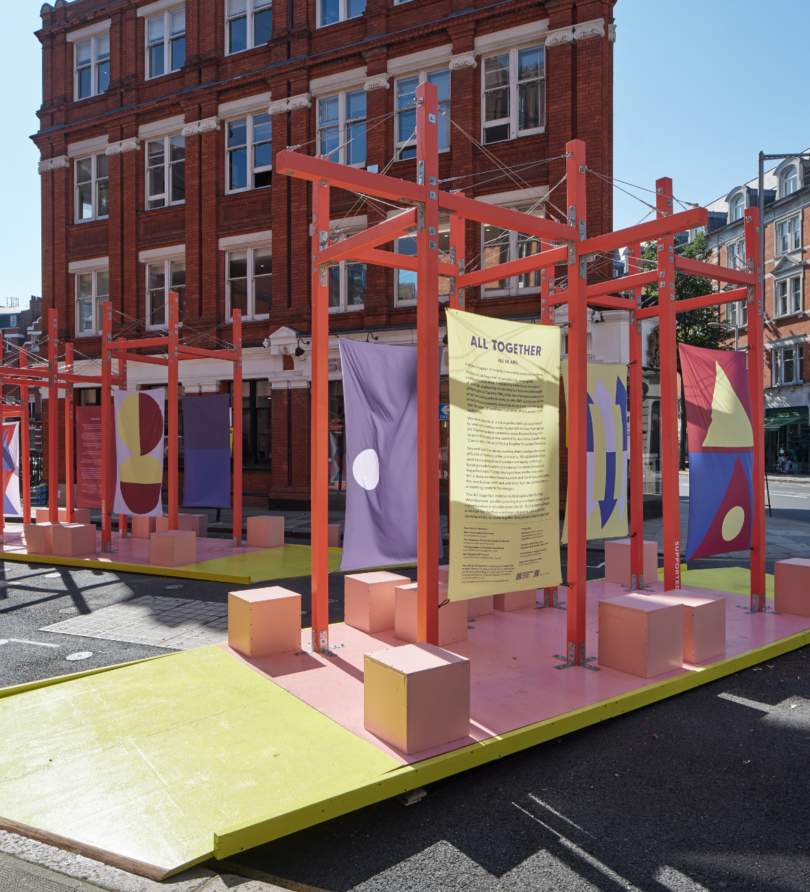
All Together Installation by All In Awe Photo: Studio Stagg
All in Awe has created All Together – an on-street installation supporting the work of a mental health charity and volunteer center in the London borough of Kensington & Chelsea – a reflection on the subject of loneliness, inspired by the startling fact that this area of London has one of the highest numbers of single-person households in the country and one of the most profound economic disparities across the UK, reminding us that loneliness is universal, affecting people from all walks of life.
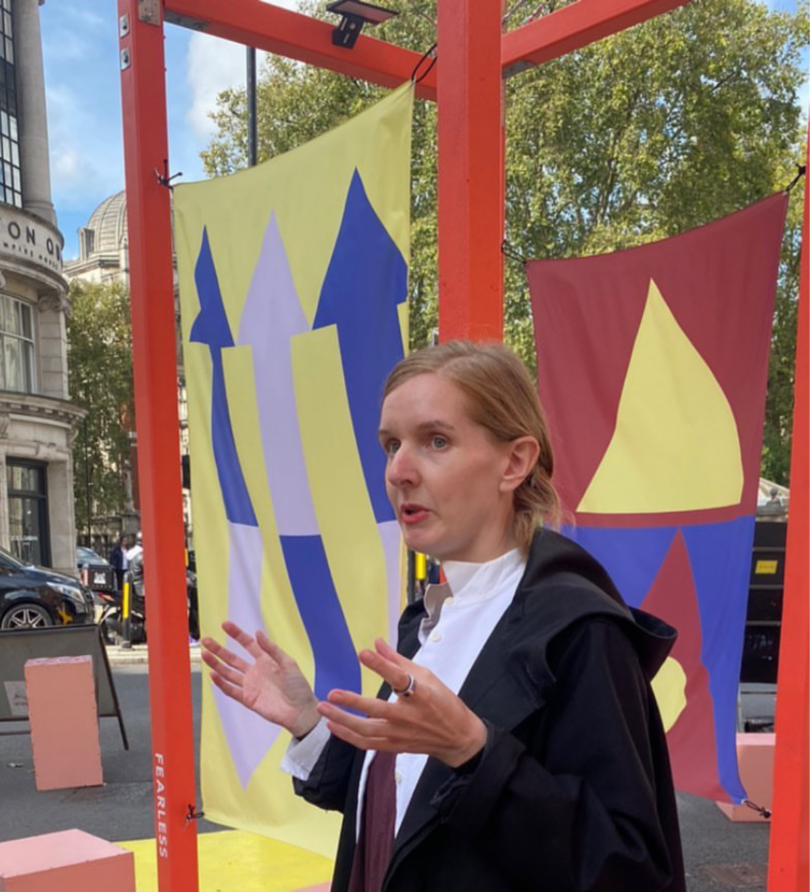
All Together Installation by All In Awe Photo: Katie Treggiden
“Our mission is to bring together people who create change with designers to support their mission and vision through the power of design,” says Eva Feldkamp of All in Awe. “We know that design has a higher purpose and possesses the capacity to tackle social issues. Through our workshops, we shared practical tools and concepts of visual design, giving people a voice to express their thoughts collectively.” The flags (above) were designed as an output of one of those workshops to visualize different emotions.
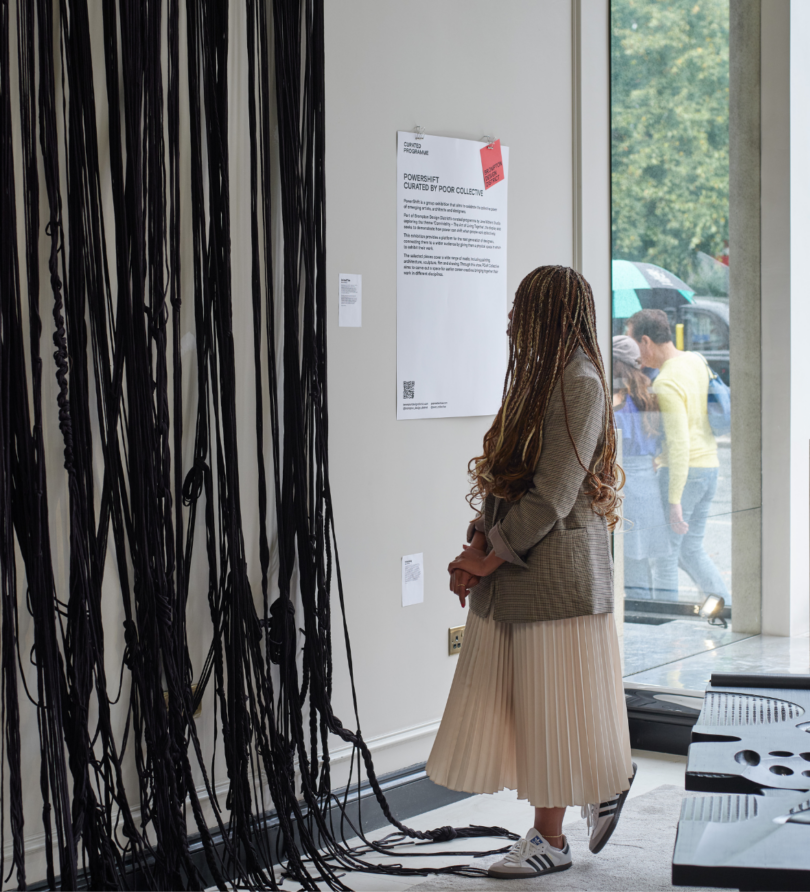
United Ties by Shanince Palmer Photo: Studio Stagg
Powershift, is a group exhibition curated by POor Collective, featuring the work of emerging artists, designers, and architects, to celebrate their collective power to create change when people work together. It won the London Design Festival’s “emerging design medal.” United Ties (above) by Shanince Palmer is a visual sculpture made, as part of a community workshop entitled A New Narrative, using braiding, knotting, and tying as a catalyst to “bring unheard voices together and express, imagine, and create a united future.”

Interplay by Giles Nartey Photo: Katie Treggiden
Designer Giles Nartey created Interplay (above) – a daybed that doubles up a board for playing the West African game of Oware, which he learnt from his grandparents in Ghana as a child.
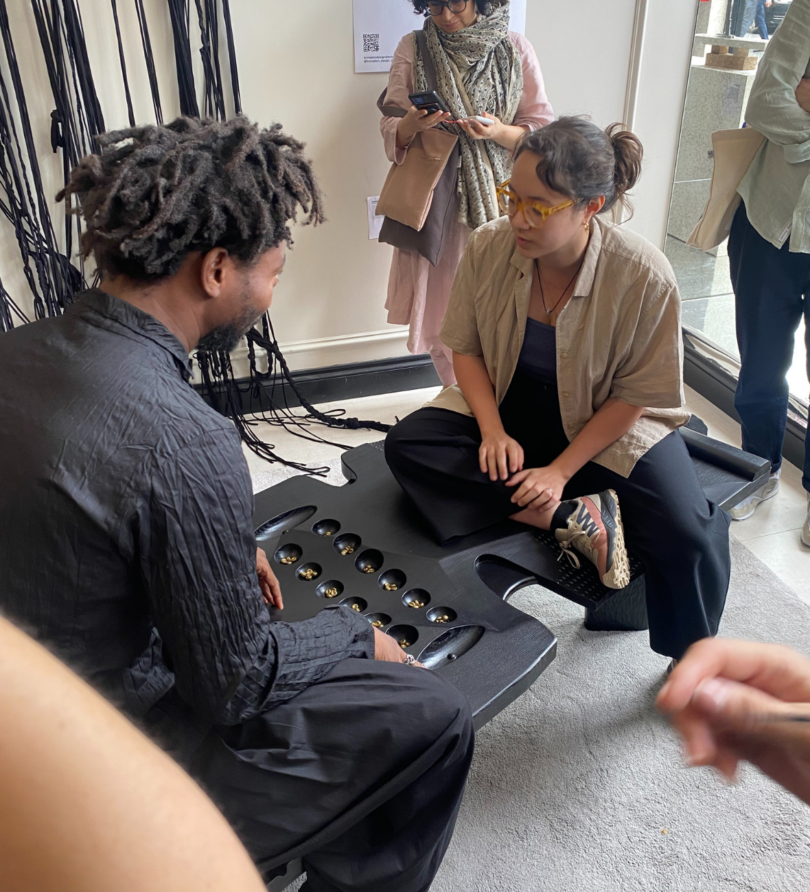
Interplay by Giles Nartey Photo: Katie Treggiden
Designed not only for lounging on, but also for two people to sit opposite one another, it forms part of his research at London’s Bartlett School of Architecture, where he is exploring the ways in which African craft cultures can be used to embed rituals into objects.
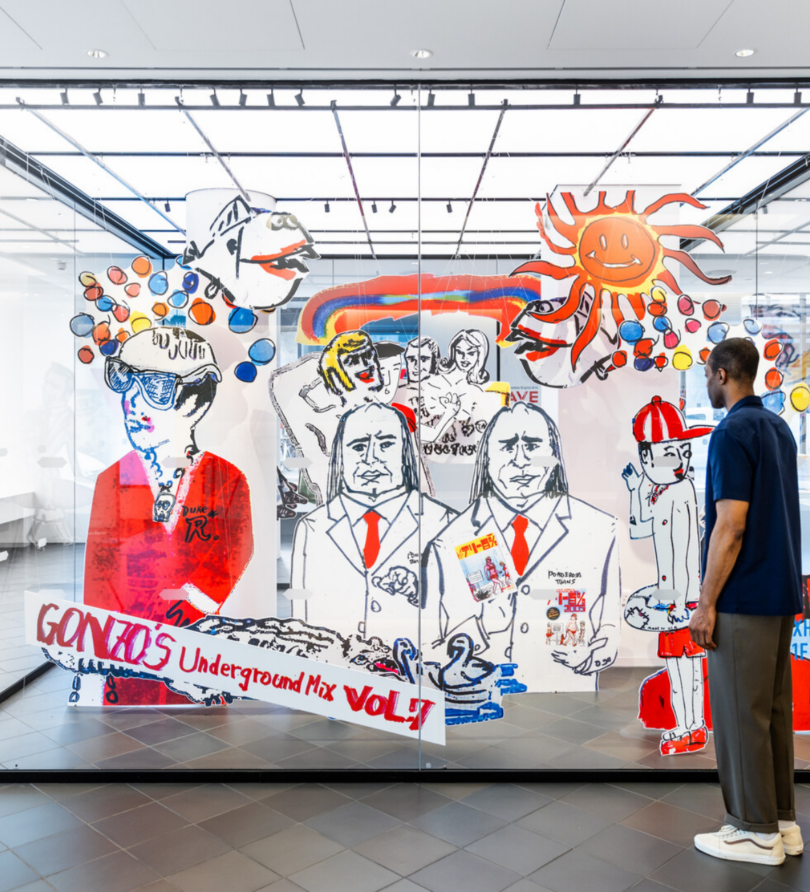
Gonzo’s Underground Mix Vol 7 by Yumura Teruhiko
Inspired by an annual exhibition in Tokyo of the same name, WAVE: Currents in Japanese Graphic Arts, was curated for Japan House by artists Hiro Sugiyama and Takahashi Kintarō, to present the work of 60 of Japan’s most significant graphic artists, introducing many of them to the UK for the first time. Pop art, surrealism, and illustration appear alongside pieces representative of the concept of heta-uma, which translates as “bad, but good,” and refers to apparently unskilled art which reveals greater merit upon close inspection – challenging our perspectives of what is “ugly” or “beautiful.”

